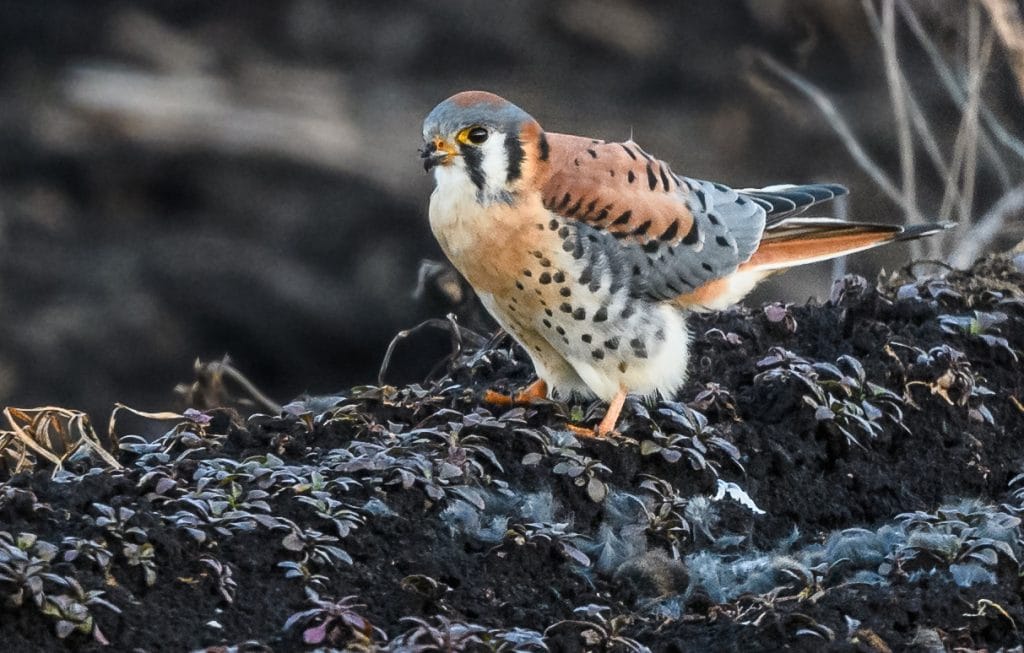Oct. 9, 2019
If Maya Rappaport had her way, there would be a few new residents of northern Arizona every June.
If it helps, they make great neighbors. And they’re very cute.
Rappaport, a master’s student in the Sustainable Communities program at Northern Arizona University, is on a mission to save the American kestrel—“gorgeous, charismatic, adorable, colorful little falcons” that live throughout the western hemisphere and, though not endangered yet, are well on their way as their habitats and food supplies are wiped out. She’s hoping to stop the dramatic decrease before the species reaches that point.
And she needs your help. Yes, you.
“In this era of changing climate, of ecological turmoil and just general confusion about what the future looks like, I think that community-based groups and grassroots groups are going to be the thing that wins a lot of environmental protections and do a lot of the work of protecting species and habitats that are really at a disadvantage in this day and age,” she said.
So, why should you care and what can you do? Let Maya Rappaport explain.
What are kestrels?
“They are super cool important little critters that can teach us a ton about a ton of different things.”
American kestrels are a small bird that can live just about anywhere with grasslands. They’re fairly noticeable if you’re looking; they perch on overhanging features like tree branches and telephone wires.
In fact, that’s how Rappaport initially became interested in these birds. When she was 18 and struggling with where her life was going, she moved to the western slope of Colorado and worked for an organic farm for nine months. Every day on her way in, walking along a dirt road with cows, sheep and horses pastured alongside it, she’d pass a pair of American kestrels on a telephone pole.
“They just struck me as these beautiful little guardians,” she said. “They were there, watching over us. They were just living their lives next to us, but it had this meaning for me—something about seeing them together made me feel safe in that area. So for me they’re terribly sweet and lovely.”
They’re fairly adaptable; the species, with a few genetic variations, can survive in warm and cold, humid and arid, forest and desert environments. What they’ve struggled to adapt to is the destruction of the grasslands where they live and eat, which in urban and suburban areas have increasingly been developed. In addition to their food supply drying up—kestrels eat insects, lizards, small birds and rodents—they’re losing places to nest. Kestrels are secondary cavity nesters, which means they find holes in trees, barns or canyon cliffsides that other creatures or nature have carved out and then abandoned. Those also are disappearing.
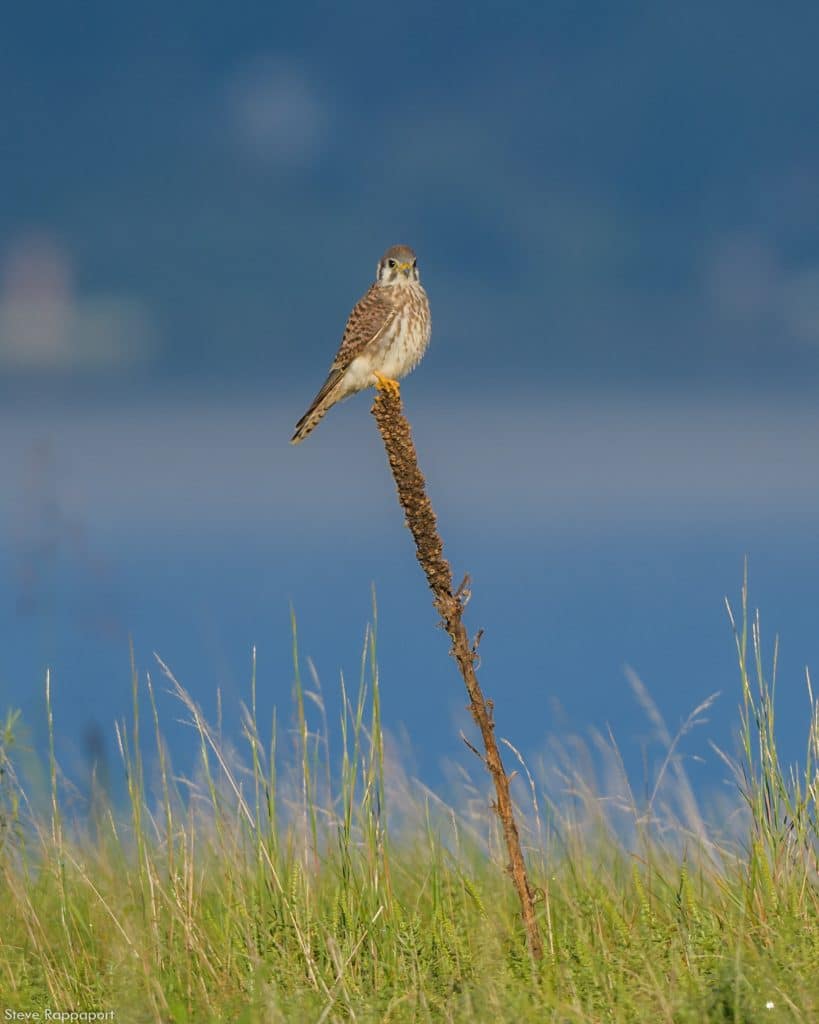
“Because they have these teeny little beaks and teeny little talons, they’re really good at hunting and killing things, but they’re not so good at digging out nesting cavities,” she said.
In the Flagstaff area, the kestrel population has dropped by about 51 percent in the last 50 years. While that sounds bad—and it is bad—it’s an improvement over much of the rest of the United States, such as parts of the Northeast, where about 90 percent of the once-thriving kestrel population is gone.
Why are they important?
For one—kestrels live in this area too. In fact, they’ve lived here much longer than most of the human population.
“Every creature has an inherent, sovereign specialness about it,” Rappaport said. “Every part of the natural world has as much a right to be there as any other part, but we as humans like things that are cute. We like things that are recognizable. We connect really strongly to beautiful things.”
Secondly, they are part of the ecosystem. They feed on creatures that eat farmers’ crops; a healthy kestrel population around a farm can provide more effective and more organic pest control than pesticides. The kestrel population also is tied to the health of native grasslands and the watershed. They also are a food source for other predators native to the area, such as Cooper’s hawks.
Third, they’re not yet endangered. It is far easier—and far better for a species—to help rebuild it while it still has sufficient genetic diversity to produce healthy offspring.
“It is critical that we begin acting now while the kestrel population is still large enough to be viable into the future,” Rappaport said. “Action now is much more critical than it may feel. This is a major fallacy in conservation thinking: conserve what’s about to die. Yes, do that, but also conserve everything else while you still can.”
Fourth, kestrels are a great way to get people interested in, informed about and taking part in conservation efforts. One of the project’s primary goals, both with the kestrels and in her work generally, is to educate people on the importance of the science being done in labs and fields throughout the world. People need to understand discoveries, concerns and problems, she said.
“If you do the science and are not able to share it with a broad audience, what’s the point of having done the science?” Rappaport asked.
What is the Flagstaff Kestrel Project?
Once she conceived of the idea for the FKP, which she’s doing in conjunction with a national program led by the American Kestrel Project, Rappaport’s first task was to find community partners. She needed funds, building materials, permission to use land, person-hours and subject-matter experts. More than that, though, she needed enthusiastic volunteers. She doesn’t care if they’re bird lovers (which some are) or if they’ve never thought about the birds that share their ecosystem. Rappaport wants anyone interested in learning more and being a part of this hands-on conservation effort to join.
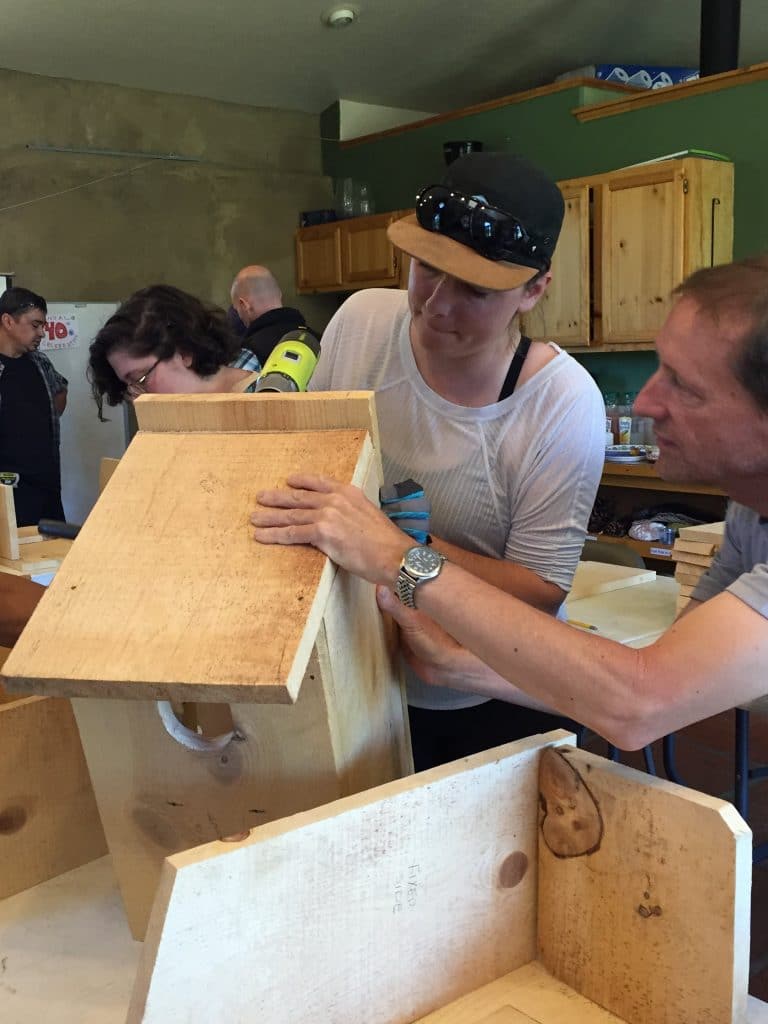
Over the summer, she collected donations, oversaw volunteers building nesting boxes and found places to install the boxes, which will happen later this fall. The boxes will go throughout the city and surrounding lands. The organization has carte blanche to install boxes the Babbitt ranchlands and the Diablo Trust lands, which are about half a million acres combined. They’ll put the boxes up near the Flagstaff Arboretum and the Arizona Trail. Private property owners who want boxes installed on their property can also volunteer; the biggest criterion is being in close proximity to a grassland habitat and having somewhere to install a box about 10 feet off the ground.
Next spring, Rappaport is expecting the first round of avian inhabitants in the nest boxes. Monitoring teams of three people will be assigned to each box; Rappaport wants those teams to include a community member (likely a member of the Audubon Society or similar group), a college student and a high school student. The team will check on the boxes at least twice during the nesting season and more if they produce chicks.
When the eggs have hatched and the young kestrels are older, Rappaport’s team will capture and band the birds. They want to track the birds’ migratory patterns, where they go in the area, how they’re interacting with the ecosystem. All of this information will give scientists a better idea of how to protect animals whose homes have been irretrievably altered by humans.
And human activity has to be taken into account as well when figuring out the future of kestrels, said Peter Friederici, director of the Sustainable Communities master’s program, Rappaport’s adviser and himself an avid birder.
“We’re very unlikely to develop any real solutions to any of those problems unless we really explore connections between humans and the environment,” he said.
In addition to gathering data about kestrel activity and encouraging them to stay in Flagstaff, Rappaport is hoping this project will bring together citizen scientists, get conversations started among different generations of residents and see knowledge moving through generations.
Who can participate?
Anyone! No prior experience is needed, though it’ll help if one person in each group of three has a vehicle. Rappaport wants to involve NAU students as much as possible. She’s hoping to work with the School of Earth and Sustainability to offer internship credit for students who volunteer for the Flagstaff Kestrel Project. She wants future scientists who are interested in birds or field science or conservation or science communication to come and get their first field experience. She also is hoping to get a documentary studies student from the School of Communication to do a documentary on the project for a capstone or master’s project.
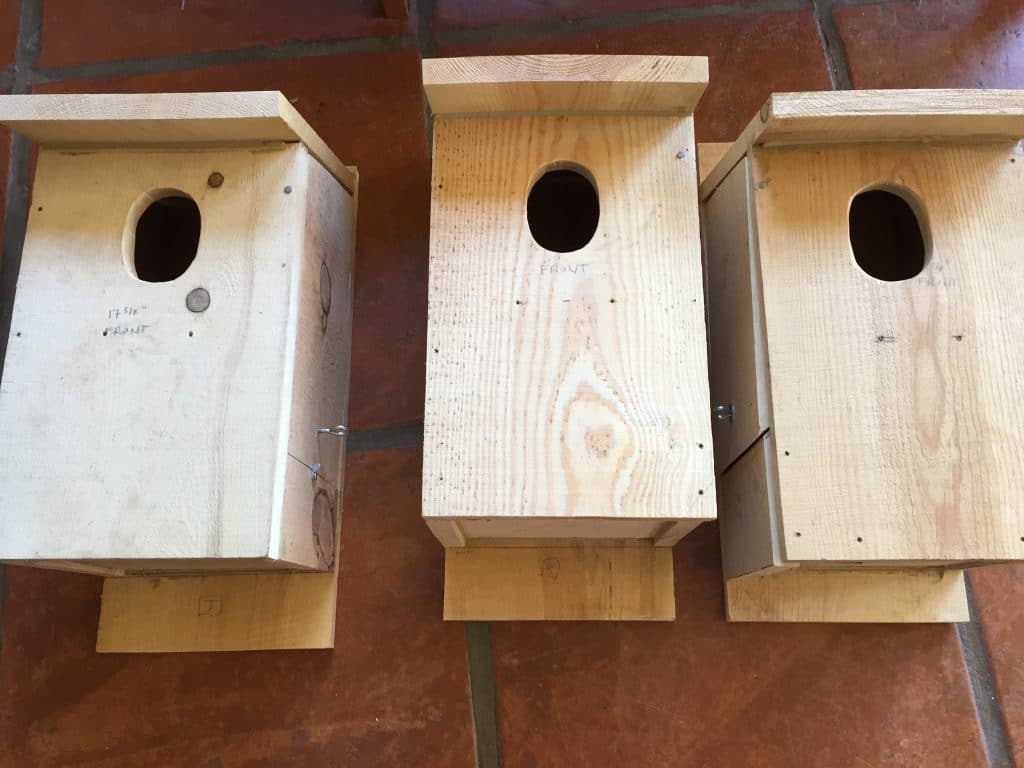
“This is about getting as many people on the ground as possible, as many people in touch with kestrels and other species as possible, and really opening people’s eyes up to these beautiful little creatures that are all around us that can be hard to see unless you develop the way of seeing,” she said.
This is a great project for people who are worried about the changing environment and want to help but feel overwhelmed by the sheer scope of the problem, Friederici said. He’s spent years working in ecology and ornithology and has often been assisted by volunteer citizen-scientists. More people means more work gets done, more data collected, more species on the road to survival and more participants who then are empowered to go to their friends and neighbors and talk about the importance of clean water and healthy ecosystems.
Ideally, that shared passion not only leads to more volunteers but to more citizens who educate themselves and their communities and hold their elected officials accountable, since much of the change to protect the environment needs to come from policy.
“Right now, most people are probably being regularly inundated with what really amounts to bad news about the world, whether we’re talking about conservation specifically or climate change more generally, and how that will change living conditions,” he said. “It can all seem totally overwhelming, especially when you take the view from 30,000 feet. It’s hard to know what to do about it.
“A really important step is getting people to have some sense of empowerment: ‘I can work toward solutions to develop a sense of place. I can contribute to what’s going on around here, things I can see and hear, I can measure water quality,’ or whatever it is. Because it’s local, it’s visible, it’s definable and it puts a personal relationship with the issue on a whole different level than a more abstract level.”
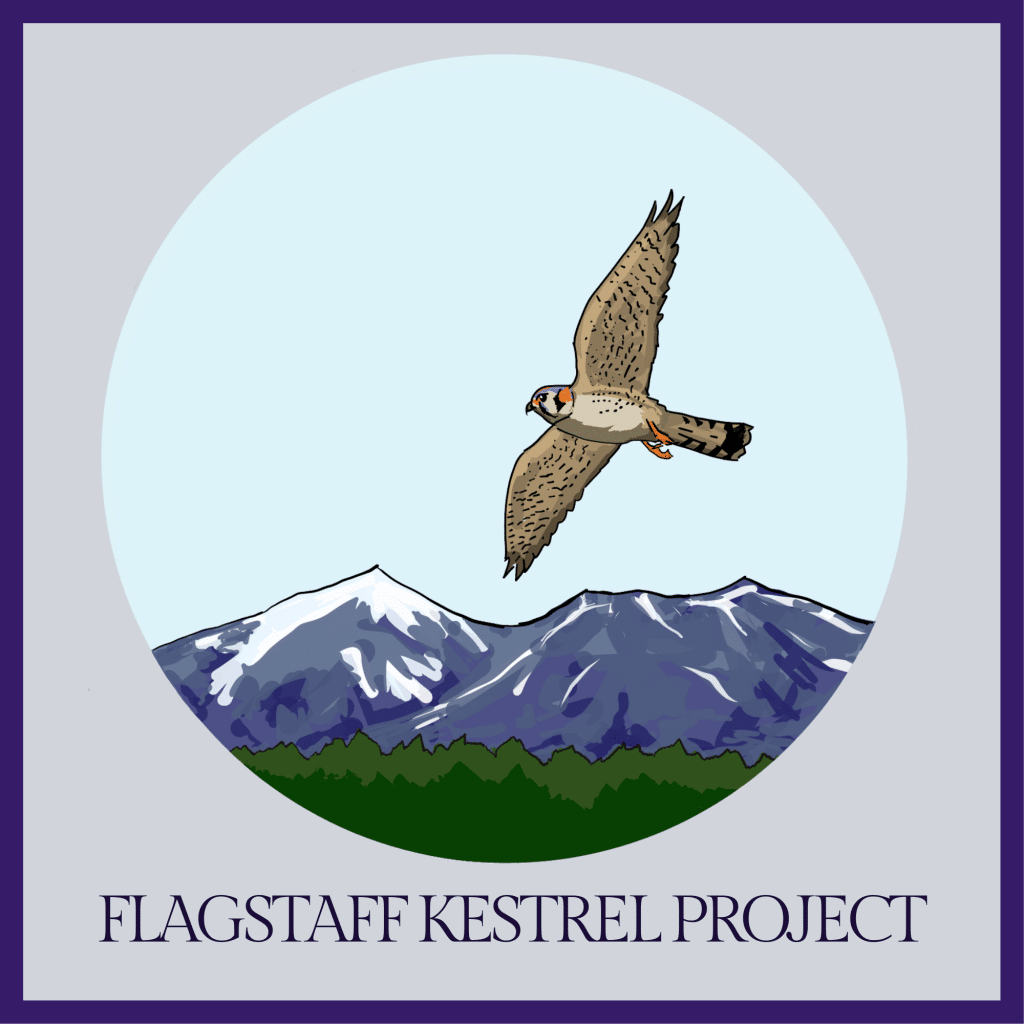
What’s next?
Rappaport found out last month that she won a grant from the Arizona Field Ornithologists’ Gale Monson Research Grant Foundation. The fundraising process will continue even when outdoor work on the project has gone dormant for the winter.
Anyone who’s interested in participating can follow the project on Facebook to find out about future volunteering and donation opportunities.

Heidi Toth | NAU Communications
(928) 523-8737 | heidi.toth@nau.edu
